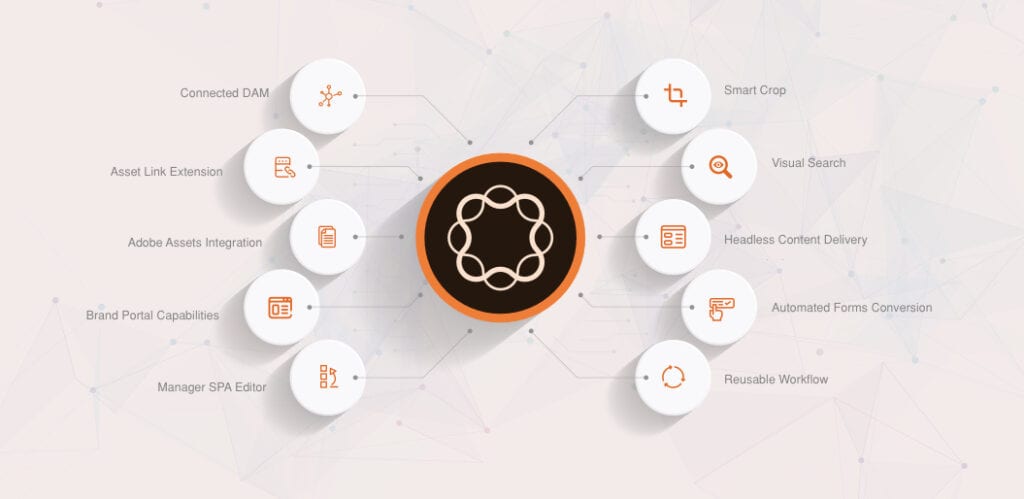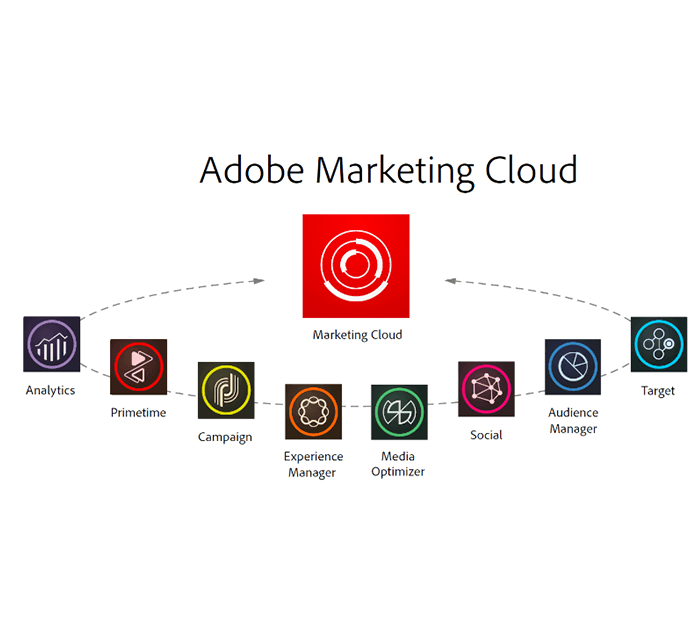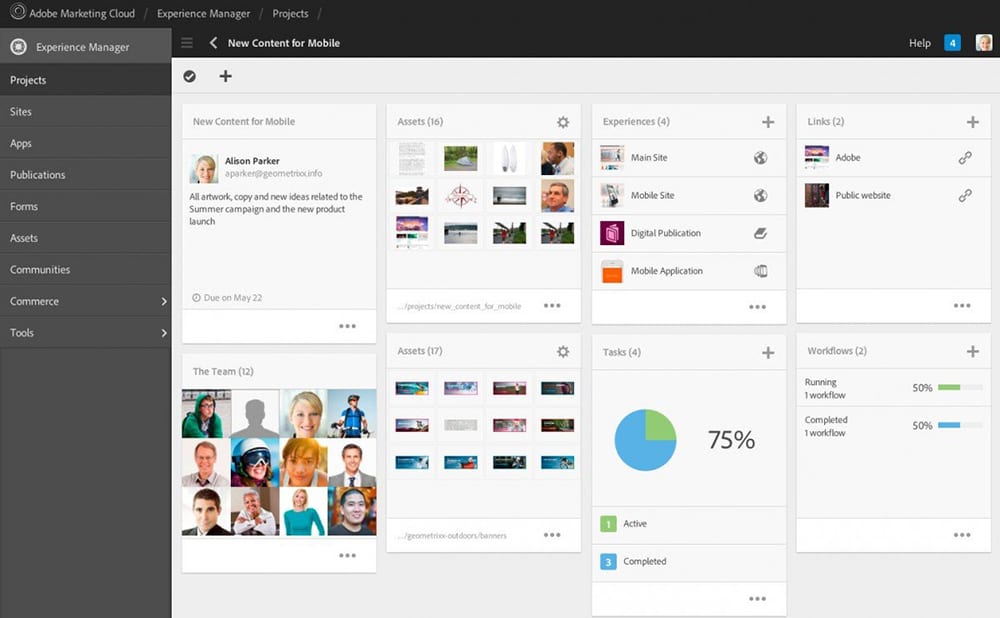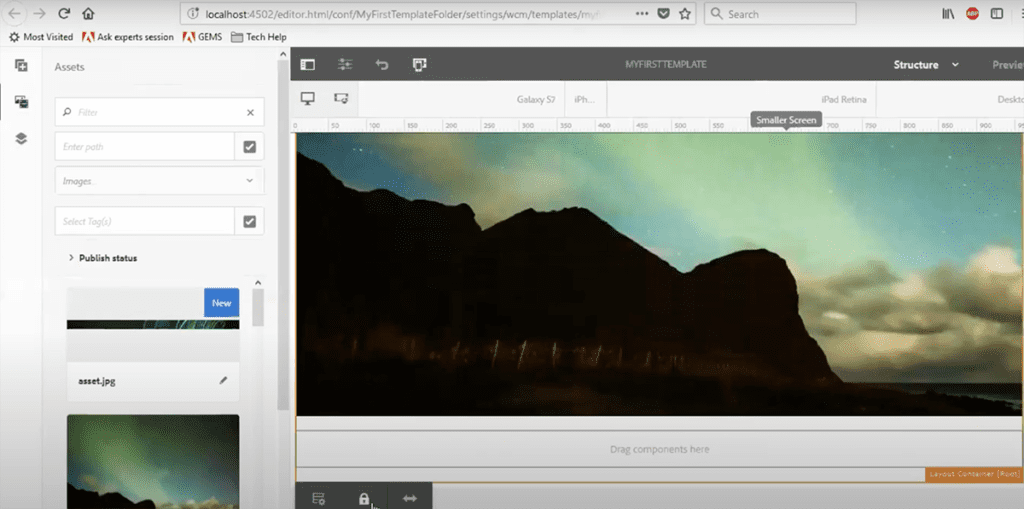If you are looking to determine whether your organization should use Adobe Experience Manager or not, this guide is made for you !
Choosing the right content management system (CMS) is an important step to developing your business online.
If you have important needs in terms of Digital Asset Management, Marketing campaign integration or third party implementation, WordPress may not be the best solution for you.
On the other hand, Adobe Experience Manager (AEM) may answer all your needs.
By the end of this article, you will know what kind of organization uses Adobe Experience Manager, why AEM is used exactly, what is the cost and what are the main benefits and drawbacks of this CMS.

Who uses Adobe Experience Manager ?
We must start by stating that AEM is an expensive investment and is accompanied by a fairly steep learning curve.
As such it is best suited to those mid-sized and large organizations with the budgets and vision to expand their digital marketing capabilities in order to optimize “Customer Experience Management” (CEM).
Corporations and conglomerates that operate multiple websites, and international companies with the need to operate in several different languages, will find AEM to be a powerful and comprehensive tool that is well-integrated with other systems such as analytics and email marketing.
Those seeking the efficiencies of seamless integration, speedy results and the capability to manage a large amount of data with little risk of error, will find a significant benefit in the investment.
AEM vs WordPress
For many years, WordPress has been the “standard” for Content Management Systems, hosting many more websites than any other platform, and will continue to be a key tool in the developer’s armory in the future.
As such, it will be the benchmark for judging other systems, and comparisons with AEM across a number of criteria are illuminating.
Content sharing on multiple channels (websites, apps, third-party integration…)
The ability of AEM to deliver cross-channel content across the web, mobile devises, apps, IoT, single-page applications and in-venue screens is effortless, and is a feature that WordPress is unable to match.
WordPress is adept at uploading content through a single channel, making it ideal for websites that are blog-based, for example, but for those operating a multiple-channel strategy, AEM offers significant advantages.
Data Analysis
AEM’s analytic tool, Adobe Analytics, can literally reach a single individual at the exact right moment in time, through its personalization and audience segmentation capabilities. Its artificial intelligence and machine-learning features cannot be matched by WordPress.
Permission and Workflow Management
Most CMS systems, including WordPress, have “permission to publish” security features that limit those with the authority to launch material “on-line”. AEM, though, has created a highly automated process that removes the need for telephone and email correspondence and removes potential confusion.
Artificial Intelligence (AI)
Popularly referred to as Adobe Sense, AEM’s built-in AI feature allows users to deliver customized experiences to literally millions of potential customers, through fast content creation. Its ability to create one time and deliver across the board is second-to-none, reducing repetitive work loads and improving efficiencies. WordPress possesses none of these capabilities.
Key benefits of AEM
As we have already mentioned, AEM isn’t suitable for everyone, but does offer some major advantages for those looking to invest heavily in multi-channel digital campaigns…

High Volume Content Handling
The Digital Asset Management (DAM) feature of AEM allows users to store content and manage visual assets on its cloud platform. Files can then be accessed by digital marketing teams operating in various locations, which greatly improves efficiency and speed of operation. Through AEM, you can create customized templates in a well-managed structure that allows you to vastly improve your marketing efforts across all channels and segments.
Creative Cloud Integration
Workflows are made so much easier via the cloud integration component. It also has the ability to allow you to use tags and metadata to find specific media items at anytime you need.
AEM can be combined with Salesforce and Adobe Campaigns as well, to effectively manage content in a wide range of applications.

Multiple Channel Content Delivery
AEM offers the ability to update touchpoints, on time and on target, from just one location. New elements and even complete campaigns can be released to multiple channels in a fraction of the time that more conventional methods use.
Search Improvements
By adding metadata and tags to files uploaded in the cloud, enabled by AEM, access to media is much more simple. Future searches become lightening fast, vastly improving efficiencies.
Improved Task Management
AEM keeps the dashboard free from distractions by providing
individual workspaces for various current projects. Work flow is improved by AEM’s comments and annotations functions.

WYSIWYG
AEM gives a what-you-see-is-what-you-get preview of the content. It can be viewed exactly as it will be seen by the target audience, and you can check it out on every type of device from smart phone to desk top.

Video Content Management
Unlike many CMS products, AEM allows organizations to promote their products and services across multiple channels with interactive video. It can also operate as a platform to create exactly-customized media, making it simpler to accurately communicate unique selling points to each individual target audience, thereby avoiding confusion in the sales messaging.
Drawbacks of AEM
As with most things in life, AEM is not perfect and has certain disadvantages, though these are less to do with performance, more with commitment…
Steep Learning Curve
AEM is not a simple tool and requires time to understand its full capabilities – up to 18 months – and it has caused headaches for its operators and those dependent on its output.
Non-technical people may never be able to appreciate its intricacies and even digital specialists can take a fair time before totally appreciating AEM’s full potential.
Hopefully you can find plenty of hands-on ressources to master AEM, such as:
Heavy Commitment to IT Resource
The organization’s IT people must be heavily involved in both AEM’s installation and set-up, as they need to build the templates, text boxes, edit screens and more, for each user. IT will also need to stay involved post-installation, to handle the creation, handling and management of projects.
Inconsistent User Interface
One general criticism of Adobe is the company’s strategy of acquiring other companies and then absorbing the different technologies into its products and platforms. AEM is one of the results of this.
It is, for example, impossible to carry out all your tasks by only using one style of interface. AEM has two basic ways to publish – Touch UI and their Classic version.
Each has its own set of advantages and disadvantages, and it is necessary to learn both (thus adding to the learning process) in order to optimize content output.
Flexibility
Whilst ticking off many of the boxes needed in a comprehensive modern-age Content Management System, AEM suffers a little from a lack of flexibility in its structure. Publishing is constrained by somewhat rigid criteria, and it doesn’t afford too many customization options.
It is also important that operators fully understand its folder-based structure – not knowing the exact location of a particular item, for example, can turn into a frustrating, time-consuming search.
What is the cost of Adobe Experience Manager ?
As we have alluded to, AEM is not a cheap option, starting from around $250,000 per annum, and rising up to $1 million + p.a. for organizations that have a very large database and as a result are using its full capabilities on a consistent basis.
Thus, for the vast majority of businesses, the costs are prohibitive, even if AEM’s features could be beneficial. It is undoubtedly best suited for multi-product, multi-national corporations that need sophisticated web content development and digital marketing campaigns, and have the financial and human resources that can support and reap the benefits of AEM’s wide and varied capabilities.
At Asia Media Studio, we are fortunate to be working with some clients already committed to AEM.
We have hired talented specialists, negotiated the learning curve and now are one of few agencies in Bangkok (perhaps the only one) with the capabilities to manage and support an AEM-based digital marketing strategy.
We have successfully combined this new expertise with our well-known design creativity to produce some hard-hitting campaigns for these clients.
If you would like to know more about how Adobe Experience Manager can help you, or want to know more about Asia Media Studio, we will be very happy to meet with you.
Feel free to visit our website at www.asiamediastudio.com
